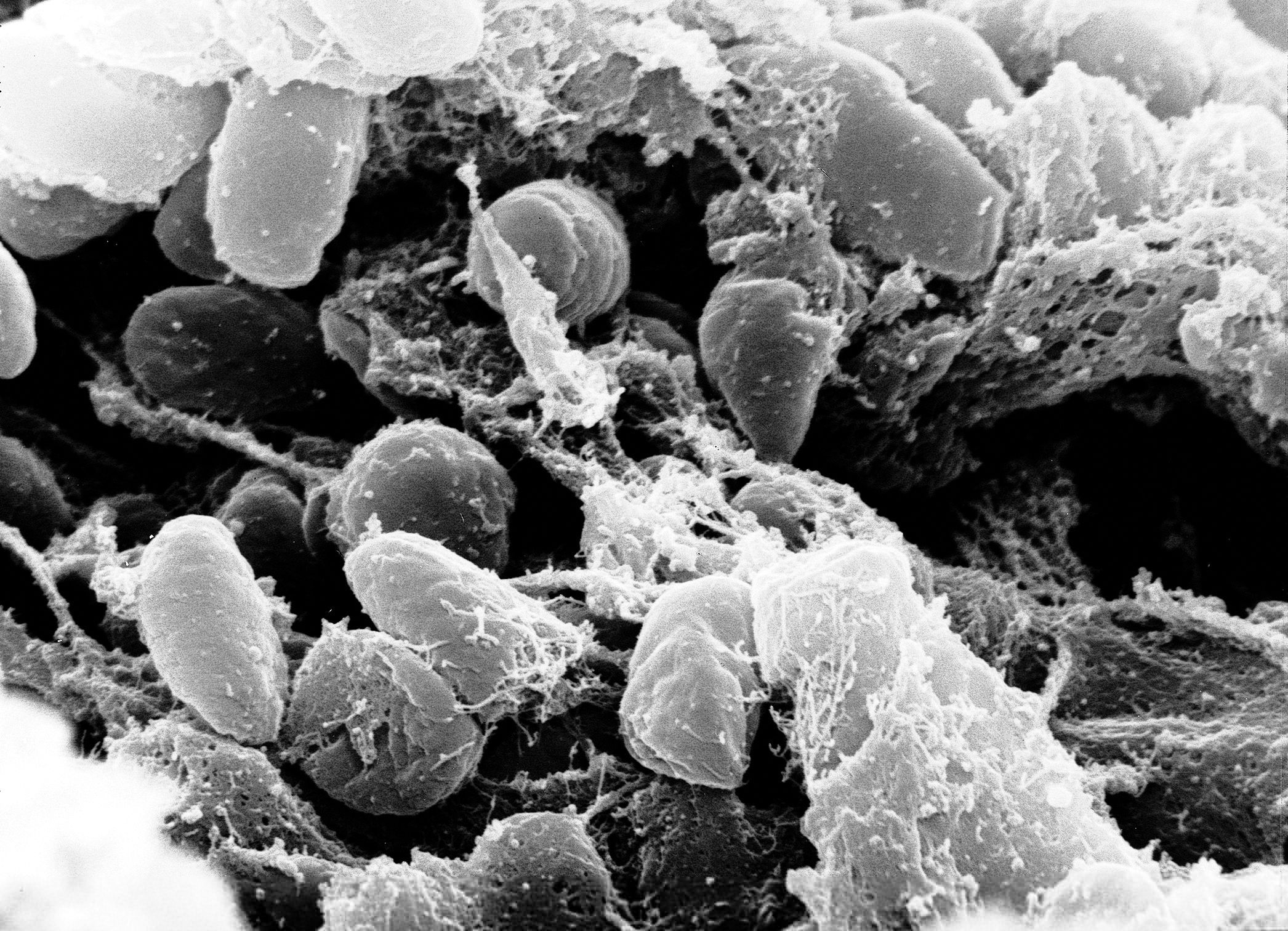
FACULTY OF MEDICINE
EPIZOOTIC ACTIVITY OF NATURAL FOCI OF PLAGUE IN GEORGIA
The Georgian National Center for Disease Control and Public Health studied Epizootic Activity of Natural Foci of Plague on the territory of Georgia between 2005 and 2013. Tbilisi State University (TSU) scientists are based at the center under the direction of Tbilisi State University’s healthcare sector. Since the disease is usually preceded by epizootics (outbreak of disease among rodent populations) before it spreads through the human population, a comprehensive study of similar foci is very important for prevention.
Two natural mezzo-foci of plague are registered in Georgia, including the southern Georgian mountainous/plateau regions (Ninotsminda, Akhalkalaki, Dmanisi, Akhaltsikhe and Aspindza districts) and the eastern Georgian plains and foothills (Dedoplistskaro, Signagi and Gardabani districts). In the mountainous foci, the plague’s causative agent was isolated in 1979, 1980, 1981, 1982, 1983, 1992 and 1997; in the plains/foothills the focus plague causative agent was detected in 1966, 1968-1971.

Two natural mezzo-foci of plague are registered in Georgia, including the southern Georgian mountainous/plateau regions (Ninotsminda, Akhalkalaki, Dmanisi, Akhaltsikhe and Aspindza districts) and the eastern Georgian plains and foothills (Dedoplistskaro, Signagi and Gardabani districts).
Natia Chubinidze, author of the research, is Academic Doctor of Medicine and an employee of the National Center for Disease Control and Public Healthcare. She notes that the focus surveillance system needs essential improvements and that the prediction system to forecast epizootic events which has been used for decades is not efficient. Epizootic activity still remains the main focus characteristic but more precise and clear definitions of epizootic events must be developed. Epizootics and epidemic alteration theories have not been revised and it is important to develop more specific criteria to determine the degree of epizootic events, because focus activity cannot be determined only by the increased number of rodents.
Many other environmental factors should also be taken into consideration. The key factor of plague epizootics is the clear identification of the conditions propitious for the formation of a natural focus, i.e. the investigation of all ecological details of the major components of the classical plague triad (reservoir-rodent, agent-flea, host-living organism). This is especially important to carry out in territories intensively colonized by infection reservoirs and vectors. Without this essential data, it is impossible to provide a reliable prediction of the situation.

Y.pestis (Plague bacterium)
■ The key factor of plague epizootics is the clear identification of the conditions propitious for the formation of a natural focus, i.e. the investigation of all ecological details of the major components of the classical plague triad (reservoir-rodent, agent-flea, host-living organism).
To improve focus surveillance, it is important to ensure permanent monitoring of the entire natural focus as a geographical region. This in turn indicates a necessity for monitoring adjacent territory for data exchange. These measures can be carried out only after creating official agreements with the corresponding health agencies of neighboring countries. Unfortunately without an official request from the Government (even with TSU scientists’ official request), the relevant agencies of Georgia’s neighboring countries provided only incomplete data or none at all.
To guarantee quality research it is necessary to identify more convincing criteria indicating the presence of an infectious agent in the focus. A polymerase chain reaction (PCR) should be considered an effective approach to improve the focus surveillance and prediction of epizootic events. Although positive PCR results could not be considered a definite indicator of the presence of a plague agent, it indicates the probability of the need for an intensive study at a particular locus.
The question of an “ecological shelter” of the plague agent during epizootic pauses, i.e. determing a biotic (living organism) or abiotic (water, soil, etc.) objects where plague causative agents can hide, still remains unresolved. Among theories discussed in the literature, the hypothesis of “Tulurul plague” is of interest. According to this theory during the periods between epizootics Y. pestis (the causative agent of the systemic invasive infectious disease often referred to as the plague) remains in the soil. The TSU researchers adhere to this theory which proposes that this presence is composed of non-cultivatable forms of Y. pestis , in other words, with a biological modification of the causative agent that rules out its detection through usual methods. However, these proposals lack reliable confirmation through experimental and field investigations.
Dr. Chubinidze believes it would be a valid course of investigation to test the natural plague focus for bacteriophages which may be active against plague, which could initiate studies of potential phage-sensibility of Y. pestis strains. Bacteriophages replicate only at the expense of certain bacteria thus the presence of a phage should indicate the presence of relevant bacteria in a given environment.
Additionally comprehensive information about the degree of virulence of Y.pestis strains isolated from natural foci of plague in Georgia, and the sensitivity of major reservoirs of infection to plague, it would be valuable to perform “cross”-experimental investigations of test parameters (virulence and sensitivity). This would mean investigating the virulence of strains in the mountainous focus towards the main causative agent in the plains /foothills, which is the red-tailed gerbil, and simultaneously to test an isolated strain in the plains/ foothills against the main agents of mountainous focus, usually voles. This might partially clarify the issue of the selective virulence of Y.pestis. It would be necessary to further identify the detailed measures that should be taken if a plague agent is isolated or if epizootics of different degrees are detected.
Paata Imnadze is Full Professor in the Public Healthcare Department of TSU, is Deputy Director General of the National Center for Disease Control and Public Healthcare and Academic Doctor of Medicine. His approach is that to ensure the efficiency of a mezzo-foci surveillance system, it is important to consider data from similar results and studies when planning fieldwork. It is essential to analyze and exchange results regularly between Georgia, Azerbaijan and Armenia so the assessment of natural foci is comprehensive. When characterizing V.pestis cultures in separate foci, it is important to determine their sensitivity towards bacteriophages as well as the possible presence of causative agents in the environment through phages.
Dr. Guram Katsitadze also participated in the research as a consultant. He is Doctor of Medical Science, Professor, Academician of the Gelati Academy of Sciences and Adviser of the Scientific Board of the National Center for Disease Control and Public Healthcare.
The center has already considered the data on the peculiarities of epizootic activities when putting programs in place. Materials kept at the archives of the National Center for Disease Control and Public Healthcare were processed during the research and in particular, the results of the work conducted in plague foci during 1960-2008. The biological qualities of Y.pestis strains kept at the national repository of bacteria and viruses have been studied.
The research results were presented at the following international conferences and seminars:
A Threat of Spread of Biodanger in Georgia and the Role of the Department of Biosecurity and Threat Reduction of the National Center for Disease Control – Seminar on Implementing UNSC Resolution 1540 in Central Asia and the Caucasus, Almaty, Kazakhstan. 2006
Biosafety/Biosecurity in Georgia - Center for Nonproliferation Studies at the Monterey Institute of International Studies, (September 2007) California, USA.
The Plague in Georgia – Conference organized by the National Center for Disease Control and Public Healthcare, May 22, 2010, Tbilisi.
Publications on this work were made in the Georgian Medical Messenger and the Georgian Medical News.
Other publications include: “Surveillance on Plague in Natural Foci in Georgia, Emerging and Endemic Pathogens. NATO Science for Peace and Security Series-A: Chemistry and Biology.p.21-28 2010
“Characterization of PCP1 Plasmids in isolated Yersinia pestis strains from the Former Soviet Union,” International Journal of Microbiology, vol. 2010, Article ID 760819, 9 pages, 2010. doi:10.1155/2010/760819.
Genotyping of Yersinia pestis and Yersinia pseudotuberculosis isolates from the Caucasus region”; Journal : BMC Microbiology.




